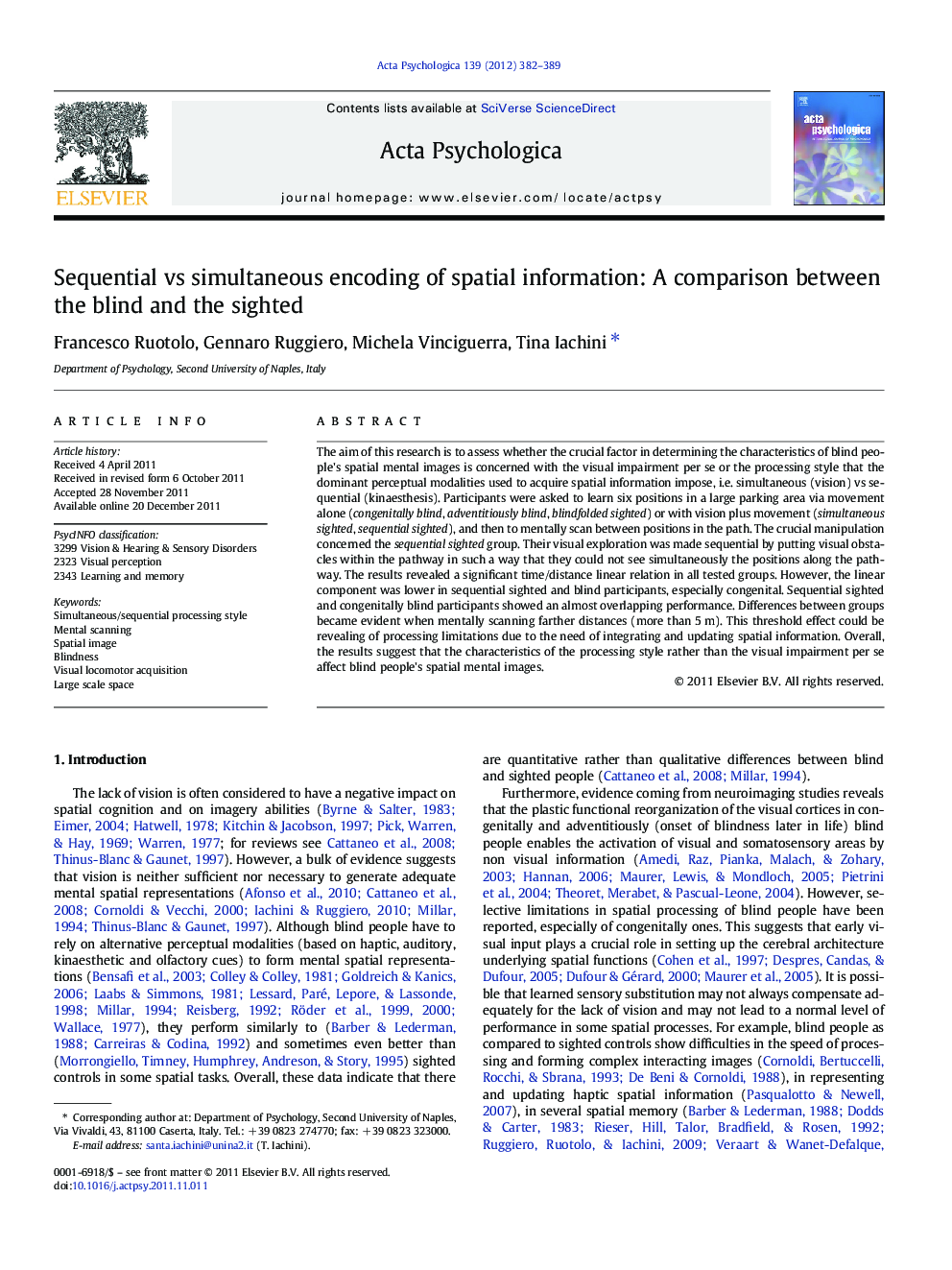| Article ID | Journal | Published Year | Pages | File Type |
|---|---|---|---|---|
| 920004 | Acta Psychologica | 2012 | 8 Pages |
The aim of this research is to assess whether the crucial factor in determining the characteristics of blind people's spatial mental images is concerned with the visual impairment per se or the processing style that the dominant perceptual modalities used to acquire spatial information impose, i.e. simultaneous (vision) vs sequential (kinaesthesis). Participants were asked to learn six positions in a large parking area via movement alone (congenitally blind, adventitiously blind, blindfolded sighted) or with vision plus movement (simultaneous sighted, sequential sighted), and then to mentally scan between positions in the path. The crucial manipulation concerned the sequential sighted group. Their visual exploration was made sequential by putting visual obstacles within the pathway in such a way that they could not see simultaneously the positions along the pathway. The results revealed a significant time/distance linear relation in all tested groups. However, the linear component was lower in sequential sighted and blind participants, especially congenital. Sequential sighted and congenitally blind participants showed an almost overlapping performance. Differences between groups became evident when mentally scanning farther distances (more than 5 m). This threshold effect could be revealing of processing limitations due to the need of integrating and updating spatial information. Overall, the results suggest that the characteristics of the processing style rather than the visual impairment per se affect blind people's spatial mental images.
► Sequential vs simultaneous spatial encoding strategies in blind and sighted people. ► Mental scanning of a navigable space explored by locomotion and/or vision. ► Spatial mental images of blind and sighted participants embody metric properties. ► Linear component was lower in sighted sequential and blind participants. ► Spatial mental maps are affected by sequential vs simultaneous encoding strategies.
